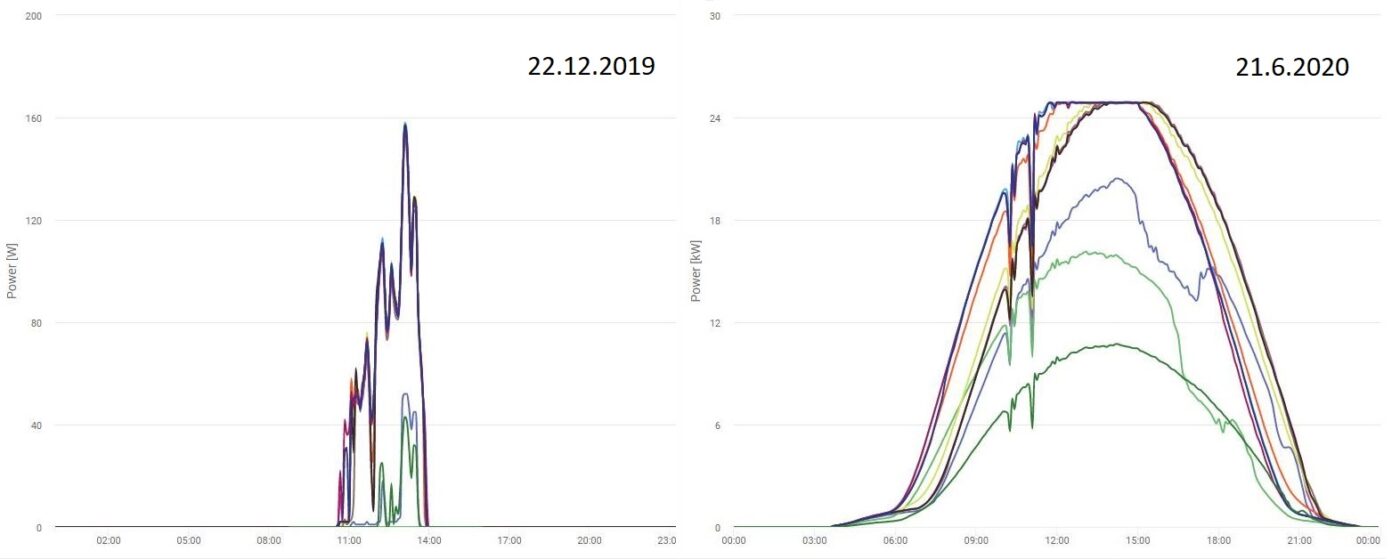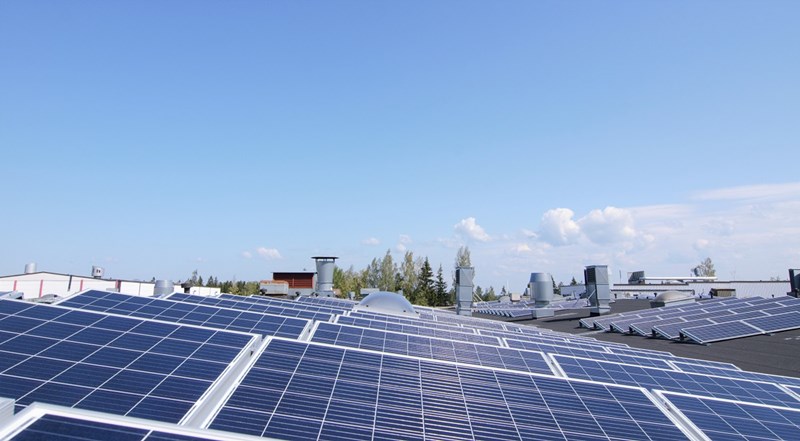A YEAR HAS PASSED SINCE OUR COMPANY INSTALLED A SOLAR PHOTOVOLTAIC SYSTEM ON THE ROOF OF OUR HEADQUARTERS IN LAHTI, FINLAND. THE PV SYSTEM HAS BY NOW SEEN ALL FOUR SEASONS OF THE YEAR, AND WE HAVE KEPT A KEEN EYE ON ITS UTILIZATION.
With 1152 solar panels and 11 inverters, our solar power plant is – to the best of my knowledge – the largest in the region installed on an industrial property. Its maximum peak power exceeds 300 kWp, of which on average 75 % has been utilized throughout this past year. But what does this mean in practice? I thought I would shed light on some of the key figures from our first year of going solar.
Solar power and the north
Having four seasons is part of the magic of Finland. Fall foliage, snowy winters, spring greenery and summer’s nightless nights are what this country has traditionally been known for. Although idyllic, the changing seasons mean we do not see a steady amount of sunlight throughout the year. This understandably reflects on our solar power production. During summer months when days are long, monthly production reaches over 45 000 kWh. But roll back a couple of months to March, and you will see it halved – and the winter months are yet another story.
The difference between the shortest and longest day of the year is dramatic: 13 hours and 44 minutes, to be exact. Graphs from our PV system demonstrate the gap between Winter Solstice (December 22, 2019) and Summer Solstice (June 21, 2020). They are actually scaled due to the vast difference between the dates – shown as watts in December and kilowatts in June. Whereas in June we reach over 24 kilowatts for several hours, in December the maximum power produced at around 1pm is actually 0,16 kilowatts (160 watts). Getting close to midnight during Summer Solstice, the energy production is still at around the highest level of a December afternoon. Talk about nightless nights!

Does this mean producing solar power in the North is inefficient? No, it does not. Our reasons for building the photovoltaic system were both ecological and economical, and they remain the same. From an economical standpoint, solar power covers a remarkable share of the energy needs of our HQ. While the system’s repayment period is circa 12 years, the panels’ service life is expected to be much longer, even 30 years. We see this as a smart investment for our future. Ecologically, it sits well with our core values: one of our values is fostering a harmonious relationship with nature, society and individuals, after all. Just as our own stainless steel products are 100 % recyclable, it is only fitting that we use renewable energy to power our operations.
Putting kWh into context
A typical detached home in Finland uses around 18 000 kWh of electricity in a year. This is roughly the same amount our photovoltaic system produces in March, which can be considered the first spring month of the year. Moving onto April, we produce nearly the amount of two households’ combined annual consumption. In May and the summer months, the production ramps up even more. We see our own people and those who have visited our HQ extremely intrigued by what the PV system can do, and I feel the comparison to regular households is probably the clearest to many of us.
We can also look at it from a slightly different angle. We can see that by now, our own solar energy production has saved over 87 tons of CO2 emissions. To put 87 tons/year of CO2 into context: it is equivalent to charging over 10 million mobile phones a year or 350 000 kilometers driven by a passenger vehicle.
In short, our first year of solar power has been a satisfying one. We are seeing a sound return on investment. Using a renewable energy source is an important part of our sustainable development, along with factors such as increasing the share of recycled raw stainless steel and working continuously to decrease the chemical load in our production. If you are interested in learning more about our sustainability, I invite you to take a look at the Sustainability section on our website.
I wish all our customers, partners and stakeholders a warm, solar-powered summer!
